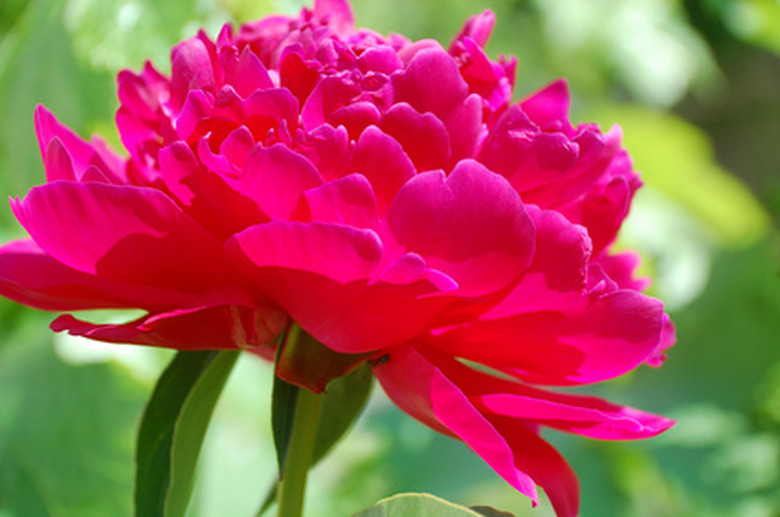Peony Food For Old Plants
Peonies are classic, long-lived perennials. Given their basic cultural requirements, they bloom reliably with little care for many years. After several years, peonies will require fertilization. A careful application of food will ensure many more years of abundant blooms from your peonies. Always water immediately after fertilizer applications.
Soil Conditions
Peonies require well-drained soil rich in organic matter. Organic matter, such as compost, holds plant nutrients and releases them over time to peony roots. Soil pH should be neutral to slightly alkaline–about 6.5 to 7.0.
- Peonies are classic, long-lived perennials.
- After several years, peonies will require fertilization.
Soil Depletion
After many years, the soil may become nutritionally deficient as peonies use the nutrients and water washes them away. Often, old plantings of peonies build up with organic matter, raising soil acidity. Old peonies with leaves turning yellow or slowing growth but no signs of insect damage or disease need fertilizer.
Peony Food
Peony plant food should be low in nitrogen. Too much nitrogen will result in abundant foliage growth with little or no flower production. Fertilizers should contain no more than half as much nitrogen (N) as phosphorus (P) and potassium (K) (5-10-10, for example).
Application
Apply fertilizer in spring when peony shoots are about 2 to 3 inches tall. Use according to label directions. Top-dressing with 1/3 inch of compost keeps the plant food in place without scratching tender roots.
- After many years, the soil may become nutritionally deficient as peonies use the nutrients and water washes them away.
- Old peonies with leaves turning yellow or slowing growth but no signs of insect damage or disease need fertilizer.
Natural/Organic Alternative
Wood ash contains potassium and is a good peony food. Wood ash is alkaline and naturally modifies acidic soils. Containing no nitrogen, wood ash will not cause excessive leaf production. Mix a small amount of ash with compost (1 to 9 ratio) and top-dress to a depth of about one-half inch. The compost helps keep the ash in place, warrants against excessive soil alkalinization and naturally adds nitrogen to the soil.
Dig Up Peony Plants To Move
Cut back the peonies after the foliage begins to die back in fall. Trim back each stem to within 6 inches of the ground with clean shears. Work around the peony clump, loosening the soil with the fork. Locate the buds or growing eyes on the roots, which resemble swollen nodes. Cut apart the clumps with a sharp knife into two or three sections, with each section containing three to five buds. Break up the soil in a well-draining, full-sun bed to a 12-inch depth. Space the holes approximately 3 feet apart. Set each peony in a prepared hole so the root buds are approximately 2 inches beneath the soil surface.
- Wood ash contains potassium and is a good peony food.
- Set each peony in a prepared hole so the root buds are approximately 2 inches beneath the soil surface.
